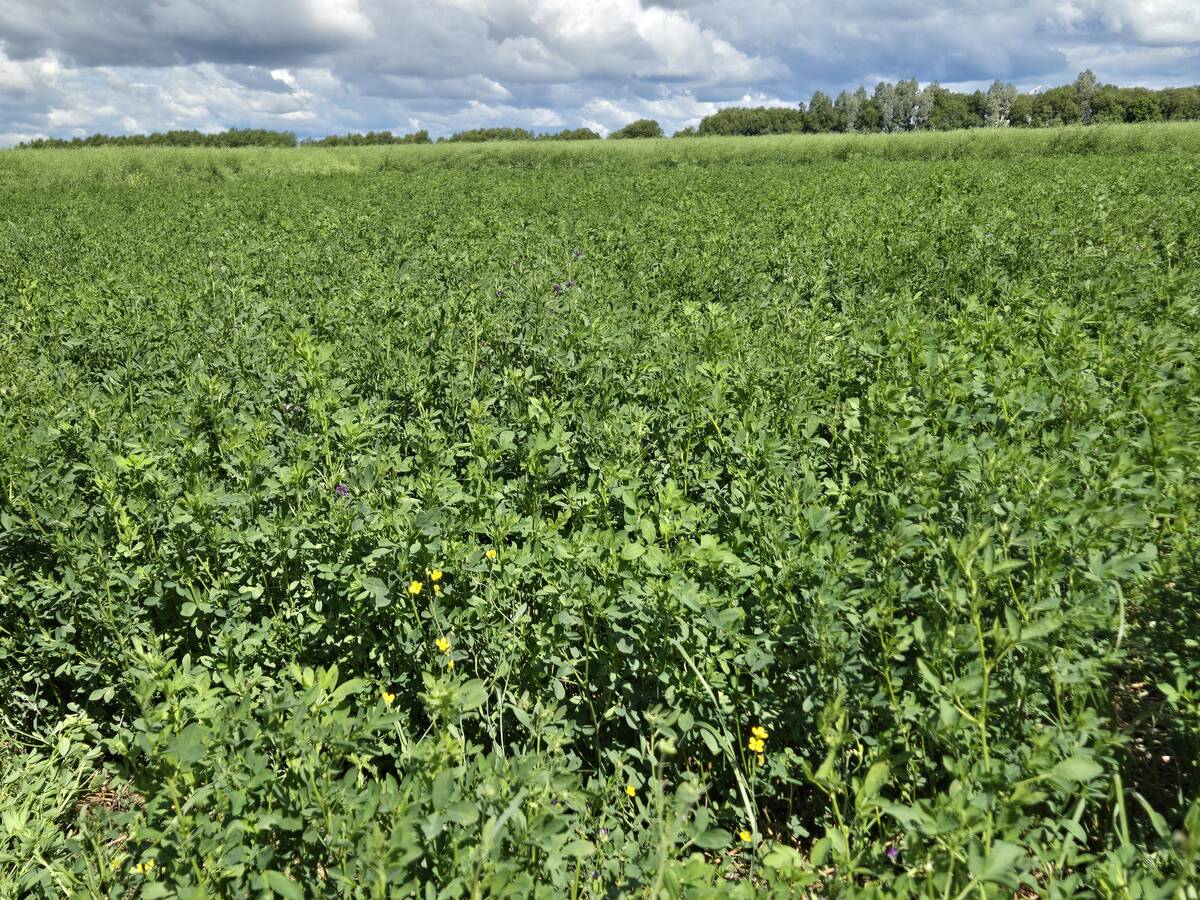Keeping alfalfa leafcutting bees healthy is crucial for two important
Saskatchewan industries, and a provincial study is trying to make that
job easier.
About 125,000 acres are devoted to alfalfa seed production in
Saskatchewan, all of it dependent on the alfalfa leafcutting bee.
Not only is this bee an important pollinator of alfalfa grown for seed,
it has also become an important export, with sales of $10 million to
$15 million a year.
“Under ideal conditions, the population doubles each year and excess
Read Also

Manitoba Parkland research station grapples with dry year
Drought conditions in northwestern Manitoba have forced researchers at the Parkland Crop Diversification Foundation to terminate some projects and reseed others.
production is marketed primarily to alfalfa seed growers in the United
States,” said Wayne Goerzen, executive director of the Saskatchewan
Alfalfa Seed Producers Association.
But the production and sales of these bees rely on keeping them free of
parasites and disease.
Goerzen, a biologist who conducted the study, said the female alfalfa
leafcutting bee collects leaf pieces to build cells in nest material
that producers place in alfalfa seed fields. The female then stores
pollen moistened with nectar in each cell and lays an egg. The egg
develops into a bee larva that emerges as an adult bee after an
incubation period the following spring.
“But during this cycle, a chalcid wasp parasite may attack the bee
larva within its cell during the spring incubation period,” Goerzen
said.
“Typically, the female parasite stings the bee larva and lays up to 20
eggs on its body. The next generation of parasites develops rapidly and
emerges 14 days later to continue the process of parasitizing bee
cells.”
During the research project, Goerzen identified several compounds with
the potential to control this parasite. The most promising is a
pyrethrin aerosol formulated from a group of natural insecticides
extracted from chrysanthemum flowers. The pyrethrin aerosol was shown
to be effective in controlling the parasites without having an adverse
effect on alfalfa leafcutting bees.
Chalkbrood is another possible threat to alfalfa leafcutting bee
production. Goerzen said the fungal disease has caused major bee losses
in alfalfa seed growing areas of the northwestern United States.
His research has helped develop a paraformaldehyde fumigation process
to protect bee cells and bee nests, which should help prevent
chalkbrood from becoming a problem in Saskatchewan.
“Several stored-product pest insect species with the potential to
severely damage Saskatchewan alfalfa leafcutting bee populations have
also been identified,” Goerzen said.
“These include the black carpet beetle, the dried-fruit moth and the
white-marked spider beetle. Control of these stored-product pests
involves removal of debris from the leafcutting bee cells when they are
harvested in the fall and utilization of proper winter storage
techniques.”
Goerzen said an ongoing research program funded by the Saskatchewan
Alfalfa Seed Producers Association and the Saskatchewan Alfalfa Seed
Producers Development Commission continues to evaluate parasite,
disease and stored product pest levels in Saskatchewan alfalfa
leafcutting bee populations. It is also developing management
strategies to help alfalfa seed producers maintain high quality
leafcutting bee populations, and thus enhance alfalfa seed production
and increase the value of alfalfa leafcutting bees in export markets.
















